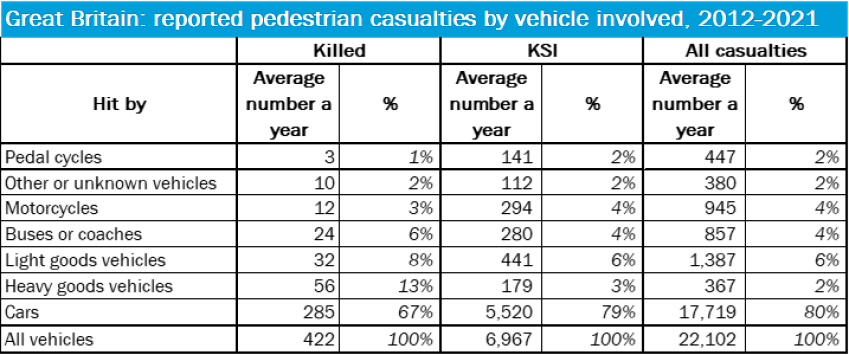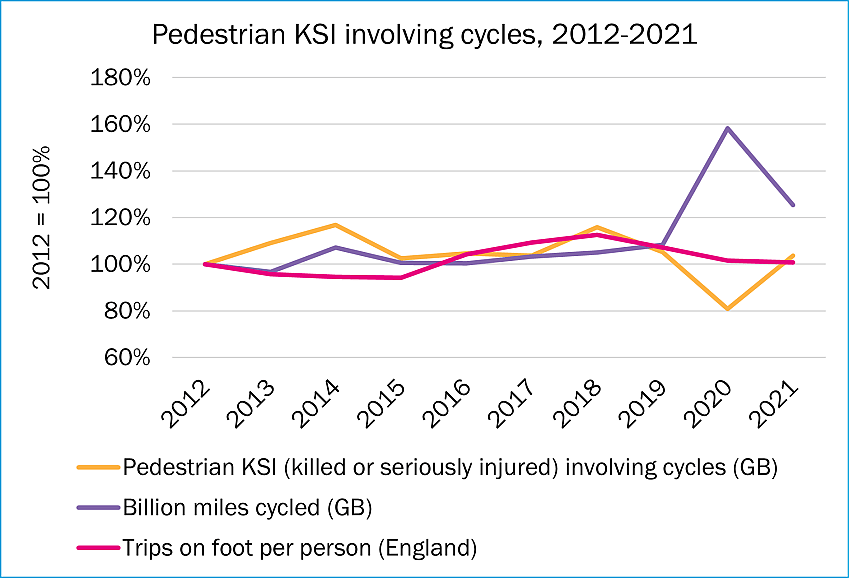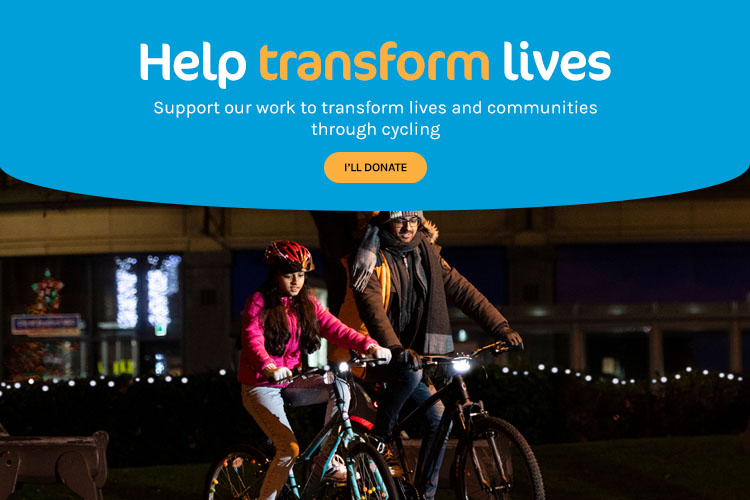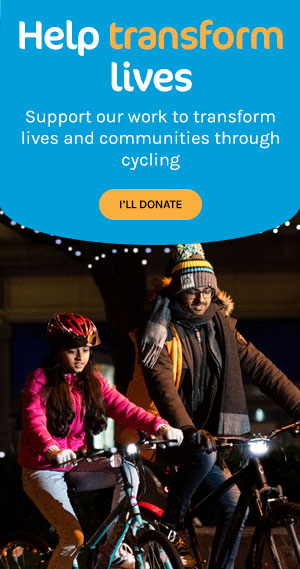Cycling UK therefore thinks it’s essential to cater properly for people who walk, wheel or cycle, and maximise harmony between them.
Road safety
Most cycling in Britain – about 85% of it – happens on minor roads and streets, where pedestrians are most likely to be and/or congregate densely.
Minor roads, however, carry only about 35% of motor traffic, because driving predominates on motorways and A roads, where people either aren’t supposed to walk or are less likely to be walking.
Yet, although people who cycle typically spend so much time in relatively close proximity to people who walk, road casualty statistics show that cycles are involved in just 2% of pedestrian casualties reported to and by the police. The rest, 98%, are hit by motor vehicles.
Cars, which make up the bulk of traffic, are involved in most injury collisions with pedestrians (about 80%), and well over two-thirds of pedestrian fatalities.
HGVs, accounting for only about 4% of non-motorway traffic, are involved in around 13% of pedestrian deaths, making them a disproportionate threat (collisions with HGVs are more likely to prove fatal than serious or slight).
Hospital data for England, which include both on-and off-road incidents whether or not they’ve been reported to the police, also show that most pedestrians treated for injuries in collisions with vehicles are hit by motor vehicles (c95%).
Pavements
It’s commonly thought that pedestrians are at particular risk from cycles colliding with them on the pavement or verge.
But, apart from the fact that most collisions with pedestrians happen elsewhere (e.g. on the carriageway), motor vehicles are involved in about 99% of fatal collisions with pedestrians on pavements or verges – 305 between 2012 and 2020 (averaging around 34 a year).
Over this entire period, cycles were involved in two pedestrian deaths on the pavement/verge, both in 2014 (6% of the total number of pedestrian fatalities involving cycles).
Motor vehicles are involved in about 94% of serious pedestrian casualties on the pavement/verge too.
Red light jumping
From 2012-20, one of the 32 pedestrians who were killed by someone who jumped a red light was hit by a cycle (in 2020).
Seventeen out the 385 serious pedestrian casualties hit by someone jumping a red light were hit by a cycle rider (4%). The rest were hit by other vehicles.
Trends
As for trends, there seems no reason to fear that pedestrians’ risk of being hit by a cycle in any location is going up:
Notes:
- None of the figures above comes from sources that attribute blame. Where the source is the Department for Transport (DfT), they are based on STATS19 records made by police at the scene, not the results of forensic investigations or court verdicts.
- The DfT has adjusted casualty data to account for changes in the way the police report on severity since about 2015, so we’ve used adjusted figures expect for those relating to pavements/verges and red light jumping. These come from a series of annual freedom of information requests we make to the DfT, some of which predate adjustment or the need for it so, for the sake of consistency, they are ‘unadjusted’.
- For a definition of a ‘serious’ injury, see DfT’s background notes.
- Obviously, cyclists can be (and are) hurt in collisions with pedestrians too. It is impossible to say exactly how many, however, because DfT tell us that casualty statistics only identify collisions with pedestrians if a pedestrian is injured.
- Annual levels of pedestrian traffic are usually estimated from the number of trips or miles that people say they do on foot, the best source being the National Travel Survey for England, used here as a proxy for GB.
- Travel habits and data collection were affected by the pandemic, so care should be taken when interpreting results from 2020 and 2021.
Sources for the above:
Sharing space/routes
Quite understandably, people who are frail or who suffer sensory or mobility impairments may be especially reluctant to share space with cyclists.
Indeed, Cycling UK believes that pavements should be for pedestrians and that safe cycling conditions on the carriageway itself should be engineered either through low traffic volumes and speeds, or else by providing high-quality, dedicated space for cycling.
All vulnerable road users, after all, benefit from less motor traffic, lower speeds and well-designed infrastructure, and society as a whole is all the better for encouraging and enabling higher levels of active, benign and non-polluting travel.
Sharing space is by no means universally unacceptable, however. It must, though, be designed properly and put in the right place (for example in pedestrian-priority high streets, parks or along towpaths and seafronts etc).
Any negativity about the prospect of sharing space or routes with cyclists can fade away following careful trials, while conflict may prove perceived rather than real.
For more guidance on good infrastructure design see:
Behaviour
Of course, every road death or serious injury is one too many, and Cycling UK believes that all road users, including people who cycle, should behave responsibly and within the law.











